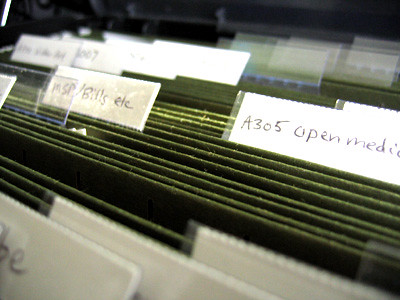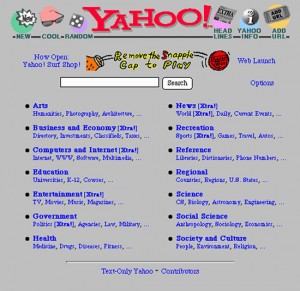Is your internal social business platform shaping up to become just a slightly better intranet or a good-looking SharePoint site? Is most of your content held in private communities? Are your online conversations happening predominantly in the form of direct messages or private discussions? Are status updates an under-utilized resource in your organization? If that’s the way your social business platform is being rolled out, you may have unknowingly become a hostage of deeply ingrained mental models, shaped by the use of paper, email and shared files, or just became the last victim of the faster horse syndrome.

One of the best books I read last year was “Too Big to Know”, by David Weinberger. It’s filled with great food for thought, but the one paragraph that stuck to my mind was this one:
Traditional knowledge is what you get when paper is its medium. There is nothing mystical about this. For example, if your medium doesn’t easily allow you to correct mistakes, knowledge will tend to be carefully vetted. If it’s expensive to publish, then you will create mechanisms that winnow out contenders. If you are publishing on paper, you will create centralized locations where you amass books. The property of knowledge as a body of vetted works comes directly from the properties of paper. Traditional knowledge has been an accident of paper.
As organizations enrich their communications and collaboration toolset from face-to-face meetings, telephone, email, instant messaging, websites and conference calls (voice and video) to socially-enabled platforms, the proverbial “faster horse” pattern tend to adamantly persist. It typically takes a long time for us to fully exploit the potential of new technologies beyond the just-the-same-but-better mindset. Telephone was simply an enabler of remote conversations, email was just a more practical way of sending missives, corporate websites were initially just glorified versions of newsletters or business brochures. It took years for telephones to be widely used as fax machines, for email to become more multi-media friendly and for websites to leverage the power of a connected audience.
Of course, the same happened on the consumer side of things. Old-time radio was dominated by broadcasts of live drama, comedy and musical performances – a voice-only theater for the masses mimicking the old Parisian Théatrophone – live opera and theater plays made available to subscribers via a network of telephone lines. Similarly, TV initially was just a better radio – or sometimes a worse radio. According to the Encyclopaedia Britannica website:
Many early TV shows were in fact based on radio programs, some of which were even simulcast for years on both media. In many cases, however, images that could be implied with sound on radio were impossible to produce cheaply for cameras. Early television broadcasters, therefore, searched for events that could be shot easily and inexpensively. Because videotape did not come into widespread use until the 1960s, very early programmers relied on live transmissions of musical performances, sporting events, sermons, and even educational lectures to fill their limited schedules.
Thus, it’s no surprise that, as organizations start embracing social media patterns to improve collaboration at the workplace, the initial usage is heavily influenced by processes and behaviors developed in a world that pre-dated the whole idea of the online social networks, and sometimes even the computer age. It will likely take years for us to fully understand that this is not just a faster horse. In fact, it’s not a horse at all.
To be more specific:
- A status update is not a person-to-person email, so the “who cares about what you are doing or thinking” question does not actually apply.
- A “wall” or “activity stream” or “message board” is not your inbox. You don’t HAVE to read every single item there. If you need to use an old metaphor, just pretend it’s a newspaper: what you read is determined by your interests and the time you have available to consume it, and most content there will quickly become stale.
- Don’t get into the “there’s too much noise” debate: if there is a “movie club” or an “I love my dog” community there that you despise, you will learn to ignore it, the same way you do most of the time – hopefully – with the Obituary section of your favorite newspaper. People have different interests and communication styles, and your corporate social platform is just a reflection of the aggregate activity of all its users.
- You don’t have to necessarily delete old or unpopular content: social interactions and good search algorithms should make the good, the relevant and the authoritative content float to the top. Google never asks people to delete wrong information or badly written blog posts. I have written my fair share of bad content, and thankfully they soon disappear from everybody’s search results. People do vote with their mouse/touchpad clicks.
- Over time, relying on well-defined taxonomies translated into folders and sub-folders to organize your content is not a sustainable data architecture strategy. That’s probably the place where you most need to let go of your paper metaphor. Folders and library taxonomies may work well with paper based documents, but in a world with low barriers to create content, the volume of information will eventually explode – that’s why the old Yahoo! Search went the dodo way. Instead, folksonomy, digital curation, good online community managers and better search algorithms are your new best friends. Get acquainted with them.

- With the progress of computer networking and cloud technologies, there is no sense in having everybody holding their own copies of a given document or multi-media. “Store once, share and stream broadly or as appropriate” is the way to go.
- Embrace mobile: your content needs to be easily accessible to your employees when and where they need it: from smartphones and tablets, from home and from hotel rooms. Furthermore, mobile devices should no longer be seen as a poor-person’s temporary substitute for the actual desktop. Yes, their screens are small, but they can also do several things better than your desktop. They can be with you all the time, they know your location, they are built to take voice commands, they are always online. In the long run, they may be the main way most of your employees will access your platform.
- Don’t overuse Direct Messages, private communities and personal spaces. Ultimately, you are implementing a social platform. While some of your content cannot be made widely available, that is typically more the exception than the rule. In the old email days, you used to ask yourself “who must know about this?”. In a social business world, the question shifted to “do I mind if my colleagues learn about this?”: if there is no harm – and, unless you are the CIA or the FBI, that’s the norm, not the exception – post it to the population at large. You’ll be surprised with how many of your colleagues do care about and can benefit for that information.
Albert Einstein wrote back in 1946 for the New York Times magazine:
A new type of thinking is essential if mankind is to survive and move toward higher levels.
Naturally, he was referring to a much more serious and important issue: how the atomic bomb had altered profoundly the nature of the world as we knew it. That quote is often paraphrased as “The world we have created today as a result of our thinking thus far has problems which cannot be solved by thinking the way we thought when we created them”. By the same token, if the reason you are implementing an internal social business platform in your organization is to overcome inefficiencies in the ways your employees currently communicate and collaborate, using your social platform as a sophisticated email or old-school website or shared drive will not take you to the promised land. Mimicking the old can help you during an initial transition, but will soon hinder your ability to fully benefit from what a social business platform can do for you. The bottom line is: your corporate knowledge is no longer constrained to the limitations of paper, email, computer files, and desktop computers. The art of possible just got redefined, and it’s time to fully embrace it.




